Incidentally, I couldn’t resist paying a return visit to my friend from the initial Akasaka post above. What’s up! He didn’t mind posing with the festive pepper because he had already had dinner and was stuffed.
‘Sake salon’ is a decent phrase for this place, actually (with apologies to that Shinagawa ‘liquor salon’ that we wandered into a few weeks ago – literally called ‘shu salon’, although that sounds positively foot-fetishist). It’s just a bare, square room with a fridge in the corner and a two-sided counter outside that. There’s a little kitchen in the back as well as a really nice private room down the hall – didn’t take pictures, but it reminded me instantly of the room at Shuzo Collection up in Nagano…which I also didn’t take any pictures of. If you don’t mind sitting on the floor, this would be a great party room.
The fridge really has pride of place; in my memory it’s sort of the only bright thing in the room, glowing with its own internal light. That’s a good writerly cliche for people, isn’t it? In this case, of course, the fridge does have its own internal light. Big Bird thought he caught Kishimoto san admiring the fridge once or twice. Not without reason – it’s packed with sake!
This is a great list of sake too. I think I knew about half of them, but only in the sense that I’ve seen them in other terrific places. There’s the regular list of 20, then another 10 or so ‘top shelf’ varieties that are kept on the top shelf of the fridge and cost about Y100 more.
You can get a selection of 3 or 50 90-ml glasses to compare (but you’ll get them all at once, so we didn’t) or you can get 1-go in these pretty glass pitchers. With sheets of dried seaweed and raw squid mixed with spicy fish eggs (which was really delicious, by the way).
Sorry, broke up my usual format of sake-food-sake right there. Let’s look at a collage of foods, all of which are firmly in the category ‘small salty snacks to enhance your thirst and my revenue’. The maki-buri, a specialty of the Noto Penninsula north of Kanazawa, is salty, small, salty strips of yellowtail that have been salted, left to dry, salted, preserved, and salted again. I have been accused of liking salt excessively, and I liked this, while Big Bird could only peck at it. The “Trio Za Japan” was three house-made breads with sake lees and other ingredients in them; left yomogi (mugwort), middle black sesame and dried soy beans (kinako), right ‘red mold’, a new one on me (赤麹 – readable but not understandable). I don’t mention the taste because they didn’t taste particularly different; the spicy mentaiko mayonnaise was predictably good, and the ashitaba (a leaf that seems to have some currency in western health cuisine) was deliciously bitter and compulsively edible, mixed with olive oil. The ‘Camouflage’ was evidently roasted duck breast soaked in sake (or duck breast soaked in sake and then roasted, but I think it was purchased roast duck, soaked later), and was edible if not exciting; the cream cheese ‘infused’ with spicy bean paste was neat because it was spicy without being red – something about putting the beans in the cheese, then taking them out again (or vice versa, like kasu-zuke cheeses. And the ‘chicken wasabi’ was fully cooked and only lightly flavored with wasabi. What’s up with that, Daj?
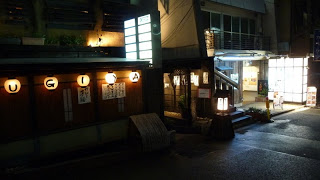
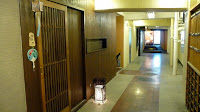

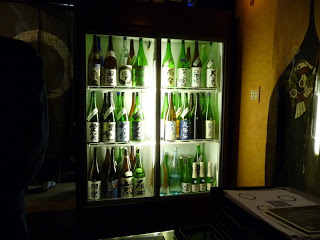
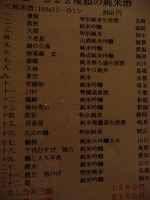
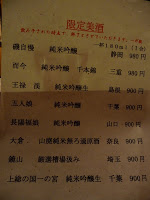
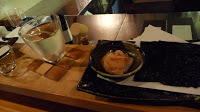
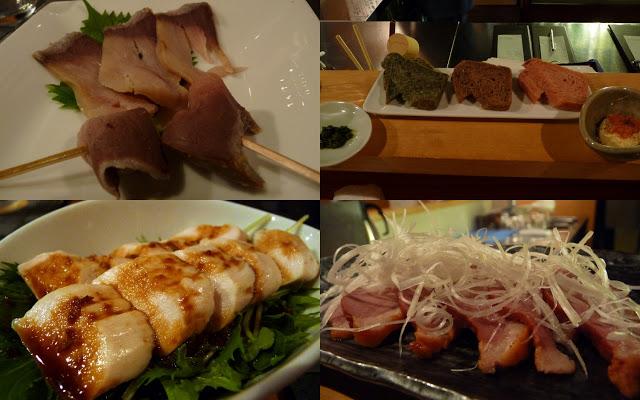
i concur with your comments regarding isojiman. i had the junmaiginjou recently, after a long spell of refraining from familiar brands, and found it too light. that said, i have been told that the basic honjouzo and ginjou are better than the junmai grade.